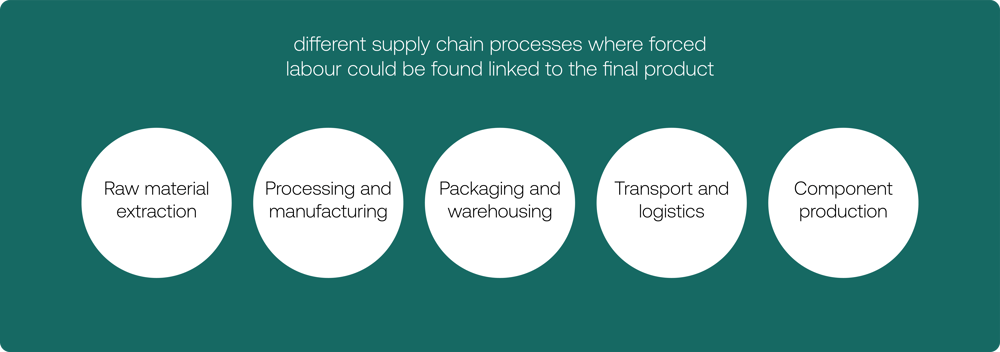

updated the 28.04.2025
Understanding the EU Forced Labour Regulation
The EU Forced Labour Regulation is a legal initiative that aims to eliminate products made with forced labour from the European market. This regulation empowers authorities to investigate, ban, and remove goods from the EU market if there is evidence that forced labour has been used at any stage of the supply chain. Unlike traditional due diligence obligations, this is an enforcement-based regulation with direct consequences for non-compliance.
The regulation covers all products, regardless of their origin, sector, or the size of the company involved. If forced labour is identified anywhere in the supply chain, whether it occurred during raw material extraction, production, assembly, or final delivery, the product may be withdrawn from the EU market. This creates a strong incentive for companies to thoroughly understand and monitor their supply chains.
The European Commission will establish a dedicated database of forced labour risks by region and sector, which national authorities will use when prioritizing investigations.
The EU Forced Labour Regulation follows an “investigate first” approach, meaning that products are allowed to enter and circulate within the EU market while authorities assess whether forced labour is involved. Only if the investigation confirms the use of forced labour will the product be withdrawn from the market. If an investigation is opened, companies will typically have 30 to 60 days to provide relevant documentation. If no information is submitted, authorities can make a decision based on the evidence available to them.

Does the EU Forced Labour Regulation affect your company?
While the regulation is not yet legally mandatory, it will apply to all companies once it is applicable. This means that regardless of your company’s size, you will need to comply with the requirements by December 2027. Although some overarching guidelines are still being finalized, including the European Commission’s database of high-risk sectors and regions, it’s clear that companies must be able to demonstrate due diligence efforts to avoid forced labour in their supply chains. Now is the time to begin preparations by assessing your current practices, identifying any potential risks, and building the documentation you will need to show compliance once enforcement begins.
How to work with the EU Forced Labour Regulation?
If you work with suppliers, make sure they also understand their responsibilities. Consider updating your supplier code of conduct to explicitly prohibit forced labour, and require transparency into their own supply chains.
How is the EU Forced Labour Regulation connected to other initiatives, regulations and laws?
The EU Forced Labour Regulation aligns with the Corporate Sustainability Due Diligence Directive (CSDDD) by addressing human rights risks across supply chains. However, where the CSDDD requires companies to carry out ongoing due diligence across their entire value chain, the Forced Labour Regulation focuses specifically on the risk linked to a particular product. If forced labour is found in connection with a product, that product can be banned from the EU market. Together, these two initiatives create a balance between systemic risk management and product-level enforcement.
The EU Forced Labour Regulation is similar in intent to the US Uyghur Forced Labor Prevention Act (UFLPA), as both aim to prevent goods made with forced labour from entering the market. While the UFLPA specifically targets goods from the Xinjiang region of China, the EU regulation applies more broadly to any product linked to forced labour, regardless of origin. Companies operating internationally should be aware of both frameworks to ensure compliance across markets.
